Wednesday, July 29, 2015
Thursday, July 16, 2015
The Year of Pluto - New Horizons Documentary ...
Published on Jun 12, 2015
New
Horizons is the first mission to the Kuiper Belt, a gigantic zone of
icy bodies and mysterious small objects orbiting beyond Neptune. This
region also is known as the “third” zone of our solar system, beyond the
inner rocky planets and outer gas giants. Johns Hopkins University
Applied Physics Laboratory (APL) in Maryland, designed, built and
operates the New Horizons spacecraft, and manages the mission for NASA’s
Science Mission Directorate in Washington. The Year of Pluto - NASA
New Horizons is a one hour documentary which takes on the hard science
and gives us answers to how the mission came about and why it matters.
Interviews with Dr. James Green, John Spencer, Fran Bagenal, Mark
Showalter and others share how New Horizons will answer many questions.
New Horizons is part of the New Frontiers Program, managed by NASA’s
Marshall Space Flight Center in Huntsville, Alabama.
FEATURED ART OF THE DAY!!
Title: Voyager
Digital Art
During the climax of the film Star Trek, the Motion Picture it was revealed that an ancient space probe from the planet Earth known as Voyager had returned after alien contact and hundreds of years. V-Ger (Voyager) intended to reunite with its creator. Do you think this is possible?? Do you know where Voyager is now?? Goto voyager.jpl.nasa.gov to find the answer!!
By Shawn-Todd O'Malley
Original Art by Shawn-Todd O’Malley
Visit me on my Art Gallery on Facebook!
Here is a link:
http://www.facebook.com/ShawnToddOmalley

Digital Art
During the climax of the film Star Trek, the Motion Picture it was revealed that an ancient space probe from the planet Earth known as Voyager had returned after alien contact and hundreds of years. V-Ger (Voyager) intended to reunite with its creator. Do you think this is possible?? Do you know where Voyager is now?? Goto voyager.jpl.nasa.gov to find the answer!!
By Shawn-Todd O'Malley
Original Art by Shawn-Todd O’Malley
Visit me on my Art Gallery on Facebook!
Here is a link:
http://www.facebook.com/

7 Fascinating Facts We Just Learned About Pluto
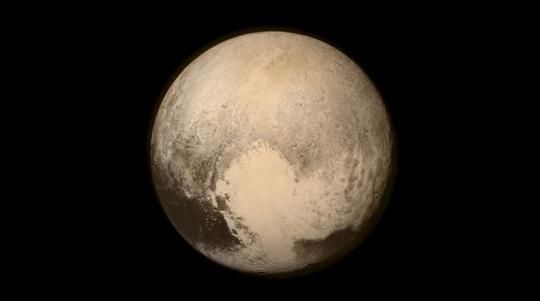
(NASA)
Fasten your seat belts, space cadets: We’re officially in the final countdown to NASA’s 3-billion-mile journey to Pluto.
Pluto
was actually still a planet when the space agency launched the mission
in early 2006. (In case you’ve been living in a crater for the past nine
years, Pluto was unceremoniously demoted due to its size that same
summer. It’s now considered a “dwarf planet” — which I’m assured by our
HR department is a perfectly acceptable term to use — or a “plutoid,” if
you’re feeling politically correct.)
Today, the agency’s unmanned New Horizons spacecraft is
in a galaxy far, far away — or, at least, at the edge of our solar
system. Earlier this morning it brushed up against the former planet’s
private space, coming within 8,000 miles of the dwarf — err, plutoid.
While we won’t get the full scope of NASA’s findings for a while,
details about the enigmatic Pluto are slowly but surely trickling in.
Behold: seven titillating tidbits we just learned about everyone’s favorite dwarf planet.
1. It may be a dwarf, but Pluto measures up better than we thought
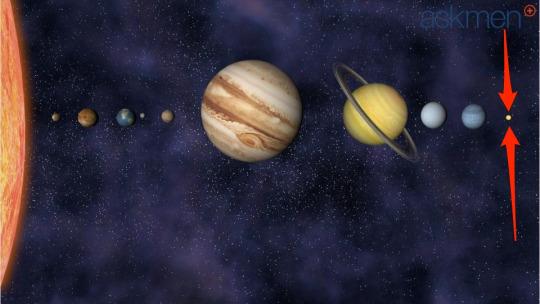
(Wochit)
Early measurements indicate Pluto has a diameter of about 1,473 miles
— the equivalent of nearly 22,000 football fields stacked end to end.
That’s about 44 miles more than scientists’ previous starting estimate.
Here’s
what really counts: The new measurement means Pluto is now considered
the largest solar system object beyond Neptune’s orbit. It’s less dense
than we thought, too, with an icier interior.
See? Size does matter.
2. Pluto has strong gas
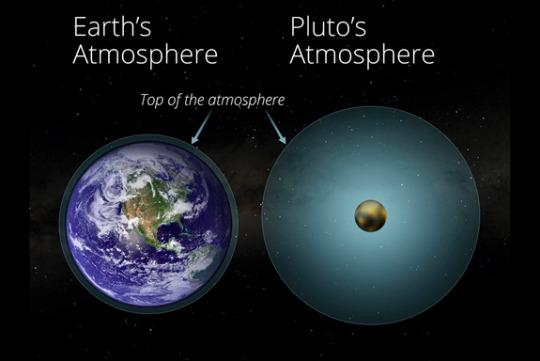
(PlutoSafari.com)
That
isn’t Uranus you’re smelling, folks: NASA scientists have confirmed
they’ve found nitrogen seeping out of Pluto’s atmosphere. The nitro
showed up a full four days earlier than the team had expected, which
suggests Pluto could be losing its atmosphere faster than previously
believed.
It also explains why Pluto never gets invited to any interplanetary dinner parties.
3. Pluto’s wearing a stylish ice cap

(Associated Press)
Speaking
of gas, New Horizons has revealed that Pluto’s so-called polar cap is
actually made up of ice — frozen methane and nitrogen, to be specific.
So let’s all just chill for a minute, OK?
4. Pluto has a heart — and a whale
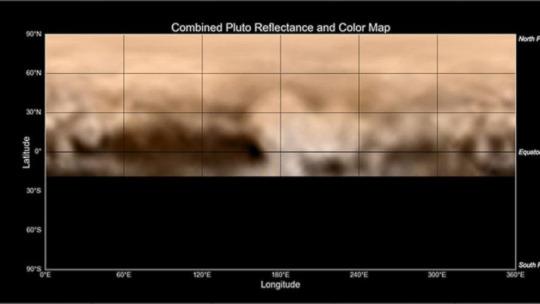
(ABC News)
Among the geographical features observed on Pluto’s surface are a “whale” — a dark band along the plutoid’s equator, complete with a tail-like attachment — and a bright heart
to keep everyone feeling warm and fuzzy inside. It’s too soon to know
what either shape represents, but we’re holding out hope for a colony of
super-affectionate alien sea creatures.
5. It also has cliffs and craters
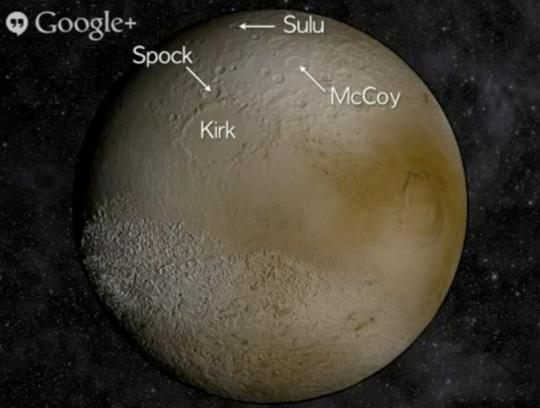
(SETI Institute/Space.com)
Some of the craters could be signs of impact, formed from smaller objects slamming into Pluto’s surface. Once again, all the big planets are ganging up on the little guy.
To make up for this solar-systemic bullying, researchers are thinking about naming some of Pluto’s craters after characters in Star Trek. No, really — they are.
6. Some of Pluto’s spots are even more mysterious
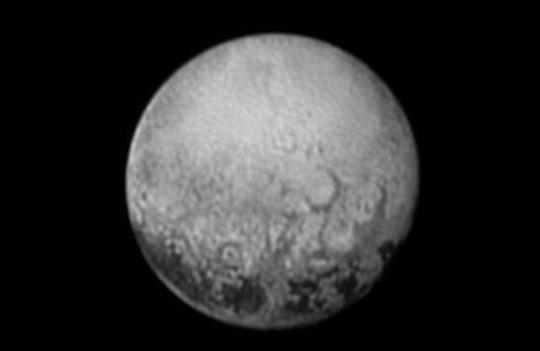
(Space.com)
Forget the cliffs, craters, and whales (oh my!): What scientists really want to understand is what’s going on with a series of dark spots
seen on Pluto’s side. The spots are closely aligned in size and spacing
— an effect NASA experts describe as “weird” (that’s the technical
term).
We understand NASA’s next mission to Pluto will include a payload of Porcelana anti-aging cream.
7. Pluto’s moons are, like, superdeep, dude

(Associated Press)
Pluto
has five known moons, and we’re learning more about ’em with every
passing day. The largest one — Charon (“Don’t Call Her Sharon”) — is filled with craters. And get this: One of the craters is longer and deeper than our own Grand Canyon.
That’s
all just scratching the planetary surface, ladies and gents. New
Horizons is scheduled to check back in late Tuesday evening after its
fly-by has finished. It may take some time for any sort of final report
to be released, but believe us: The results should be out of this world.
Subscribe to:
Posts (Atom)